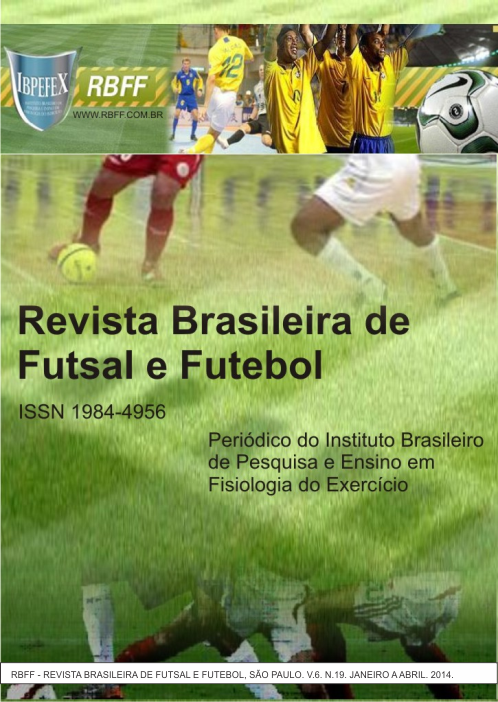Analisys of body mass index in the basis categories from women footballon the city of São José dos Campos-SP
Abstract
The increasing participation of young female athletes in sports programs throughout the country promotes the expansion in the rates of health. Theacquisition of routine exercise and healthy habits promoted by thesport in youth can promote higher quality of life. The objective of this study was analyze the Body Mass Index of young footballplayers of a female sports training program in the city of São José dos Campos in basis categories. The results suggest differences between BMI Groups U13 and U15 which may be related to Peak Speed Growth, giving the Group U15 stage a more prominent growth when compared to the other groups. Comparing the distribution percentile to the classification proposed by the World Health Organization observed the highest value for the conditions of healthy individuals, some underweight and any athletewith overweight. We conclude that the use of BMI in basis categories can be a tool for observing the changes in the growth of young athletes, but future studies should include analysis of the peak height velocity and to relate these changes in several categories.
References
-Bergmann, G.; Bergmann, M.; Lorenzi, T.; Garlipp, D.; Pinheiro, E.D.; Gaya, A. Pico de velocidade de crescimento em meninos e meninas de 10 a 14 anos de idade. Rev. bras. Educ. Fís. Esp., São Paulo. Vol. 20. Suplemento 5. p. 303-331. 2006.
-Castilho, S.D.; Barros Filho, A.A. Crescimento Pós Menarca. Arq Bras Endocrinol Metab. Vol. 44. Núm. 3. 2000.
-Heywadr, V.H; Stolarczyk, L.M. Avaliação da composição corporal aplicada. São Paulo: Manole, 2000.
-Lourenço, B; Queiroz, L.B. Crescimento e Desenvolvimento Puberal na Adolescência. Rev Med (São Paulo). Vol. 89. Núm. 2. p. 70-75. 2010.
-Marcos, R.Q.; Sandra, A.F.; Marcelo, R. Perfil Antropométrico de Atletas de Futsal Feminino de Alto Nível Competitivo Conforme a Função Tática Desempenhada no Jogo. Rev. Bras. Cine. Des. Hum. Vol. 7. Núm. 1. p. 30-34. 2005.
-OMS, Organização Mundial da Saúde –OMS. Obesity. Preventing and managing the global epidemic. Genebra, 1997.
-Ricardo, D.R; Araújo, C.G.S. Índice de massa corporal: um questionamento científico baseado em evidências. Arq. Brás. Cardiol. Vol. 79. Núm. 1. p. 61-69. 2002.
-Silva, L.P.; Passos, R.F.N. Perfil Antropométrico de Mulheres Praticantes de Futebol Feminino Profissional. Connexions. p. 2-3. 2007.
Authors who publish in this journal agree to the following terms:
- Authors retain the copyright and grant the journal the right of first publication, with work simultaneously licensed under the Creative Commons Attribution License BY-NC which allows the sharing of the work with acknowledgment of the authorship of the work and initial publication in this journal.
- Authors are authorized to enter into additional contracts separately for non-exclusive distribution of the version of the work published in this journal (eg, publishing in institutional repository or book chapter), with acknowledgment of authorship and initial publication in this journal.
- Authors are allowed and encouraged to post and distribute their work online (eg, in institutional repositories or on their personal page) at any point before or during the editorial process, as this can bring about productive change as well as increase impact and impact. citation of published work (See The Effect of Free Access).





